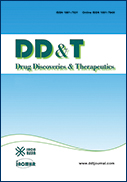Volume 12, Issue 5
Displaying 1-10 of 10 articles from this issue
- |<
- <
- 1
- >
- >|
Original Articles
-
2018 Volume 12 Issue 5 Pages 259-266
Published: October 31, 2018
Released on J-STAGE: November 22, 2018
Download PDF (567K) -
2018 Volume 12 Issue 5 Pages 267-274
Published: October 31, 2018
Released on J-STAGE: November 22, 2018
Download PDF (1023K) -
2018 Volume 12 Issue 5 Pages 275-282
Published: October 31, 2018
Released on J-STAGE: November 22, 2018
Download PDF (1059K) -
2018 Volume 12 Issue 5 Pages 283-290
Published: October 31, 2018
Released on J-STAGE: November 22, 2018
Download PDF (301K)
Brief Reports
-
2018 Volume 12 Issue 5 Pages 291-294
Published: October 31, 2018
Released on J-STAGE: November 22, 2018
Download PDF (374K) -
2018 Volume 12 Issue 5 Pages 295-298
Published: October 31, 2018
Released on J-STAGE: November 22, 2018
Download PDF (263K) -
2018 Volume 12 Issue 5 Pages 299-303
Published: October 31, 2018
Released on J-STAGE: November 22, 2018
Download PDF (315K)
Case Report
-
2018 Volume 12 Issue 5 Pages 304-308
Published: October 31, 2018
Released on J-STAGE: November 22, 2018
Download PDF (1051K) -
2018 Volume 12 Issue 5 Pages 309-314
Published: October 31, 2018
Released on J-STAGE: November 22, 2018
Download PDF (1082K) -
2018 Volume 12 Issue 5 Pages 315-317
Published: October 31, 2018
Released on J-STAGE: November 22, 2018
Download PDF (194K)
- |<
- <
- 1
- >
- >|
